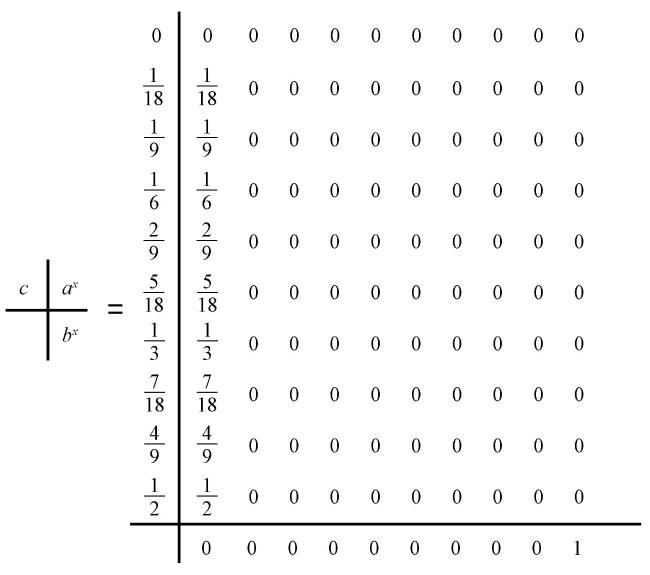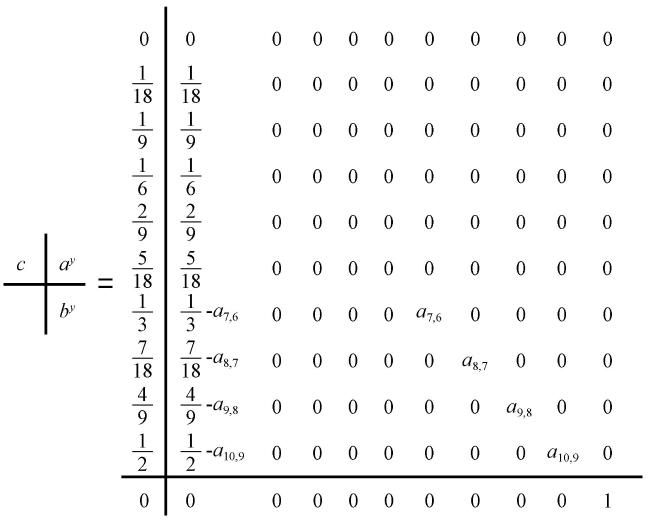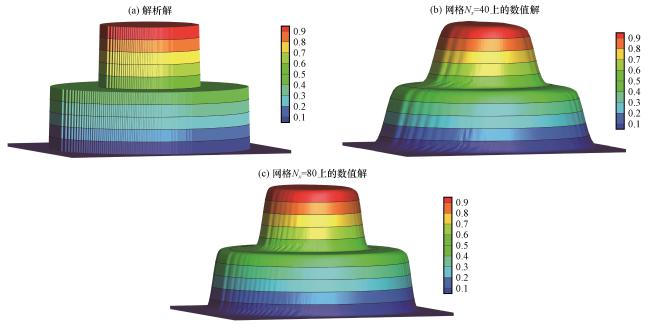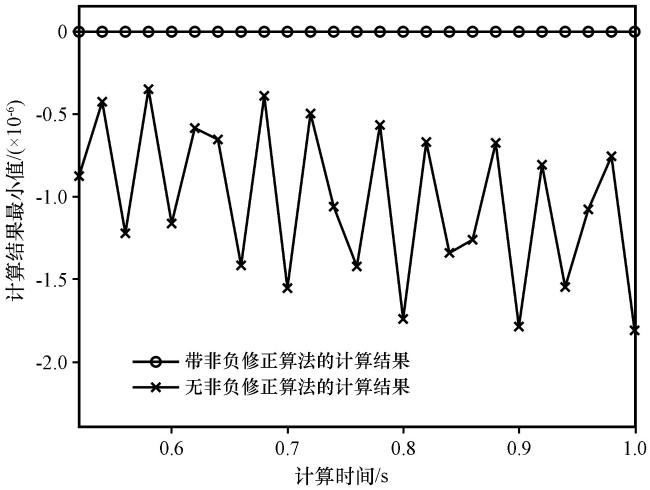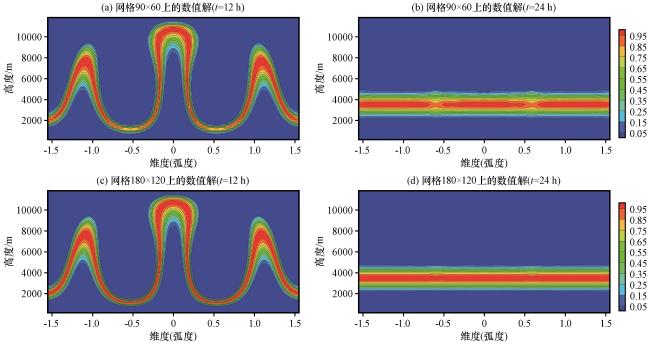1 引言
2 高保真平流方程算法
2.1 空间离散格式
2.2 保形限制器
2.3 正定通量修正
2.4 时间推进方法
3 数值试验与结果
3.1 平面二维试验
3.1.1 收敛性试验
表1 平流算法的收敛性测试Table 1 Convergence test of advection schemes |
| ( ) | order | ( ) | order | ( ) | order | |||
|---|---|---|---|---|---|---|---|---|
| noLIM | 20 | 200 | 32.16 | - | 29.16 | - | 25.25 | - |
| 40 | 800 | 2.009 | 4.001 | 1.822 | 4.000 | 1.578 | 4.000 | |
| 80 | 3200 | 0.1256 | 4.000 | 0.1139 | 4.000 | 0.0986 | 4.000 | |
| hWENO | 20 | 200 | 32.16 | - | 29.16 | - | 25.27 | - |
| 40 | 800 | 2.009 | 4.001 | 1.822 | 4.000 | 1.578 | 4.001 | |
| 80 | 3200 | 0.1256 | 4.000 | 0.1139 | 4.000 | 0.0986 | 4.000 | |
| vTVD | 20 | 200 | 34.02 | - | 31.06 | - | 26.92 | - |
| 40 | 800 | 2.555 | 3.735 | 2.309 | 3.750 | 1.995 | 3.754 | |
| 80 | 3200 | 0.2717 | 3.233 | 0.2396 | 3.269 | 0.2020 | 3.304 | |
| FCT | 20 | 200 | 33.97 | - | 31.04 | - | 26.88 | - |
| 40 | 800 | 2.554 | 3.733 | 2.308 | 3.749 | 1.995 | 3.752 | |
| 80 | 3200 | 0.2714 | 3.234 | 0.2394 | 3.269 | 0.2020 | 3.304 |



